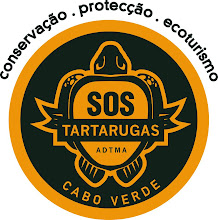For people involved in efforts to protect sea turtles, Tuesday has special meaning. On that day 100 years ago, Dr. Archie Carr, the man recognized as the “father” of sea turtle research and conservation, was born in Mobile, Ala.
For many area residents, Carr’s name is known primarily in association with the 20-mile stretch of coastline from Melbourne Beach to Wabasso Beach, which was designated as the Archie Carr National Wildlife Refuge.
Carr National Wildlife Refuge was established to protect the largest nesting population of loggerhead turtles in the Western Hemisphere and the largest nesting population of green turtles in the United States. It contains important nesting beaches for leatherback turtles as well.
Few people fully understand who Carr was or why he was so important to the world of conservation. He was a revered zoology professor at the University of Florida, the world’s leading authority on sea turtles, a brilliant writer of scientific and popular literature, and an internationally acclaimed advocate for conservation. His inquiring mind was legendary and he inspired legions of scientific followers and activists.
It would be a fitting tribute for everyone to reflect, like Carr did, on the wonder of nature and the mystery of sea turtles. Pick up a book he wrote, like “So Excellent A Fish” or “Ulendo,” or read about him in "A Naturalist in Florida"; or "The Man Who Saved Sea Turtles." But to truly honor Carr, one need only take up the cause for protecting wildlife and wild places.
 d to count tracks and nests. For some reason she had become confused after laying her nest and wandered inland. For o
d to count tracks and nests. For some reason she had become confused after laying her nest and wandered inland. For o nce we can't say it was because of lights because the area around Mont Leão is quite dark. It was really lucky for her that we chose to do the survey that day as we wouldn't usually go to this bit of beach. Neal, Euclides, Andy & Antonio eventually got her back into the sea and while they were tagging her several jeeps full of happy tourists arrived and were able to watch her swim off. The first save of the season!
nce we can't say it was because of lights because the area around Mont Leão is quite dark. It was really lucky for her that we chose to do the survey that day as we wouldn't usually go to this bit of beach. Neal, Euclides, Andy & Antonio eventually got her back into the sea and while they were tagging her several jeeps full of happy tourists arrived and were able to watch her swim off. The first save of the season!












